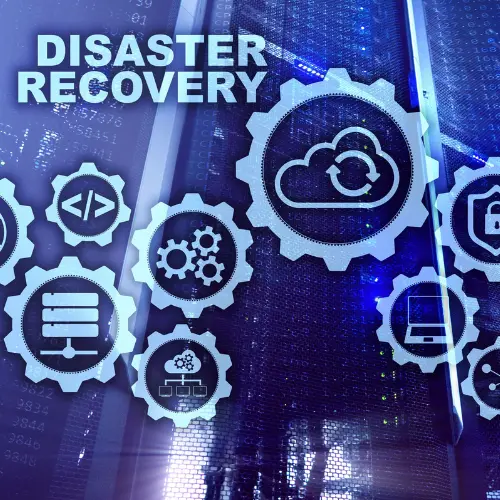Data disaster recovery is in place to get critical information and systems back up quickly following a serious event. It is the use of predefined strategies, tools, and processes to quickly restore data after a disaster without incurring significant downtime or losses.

Disaster Recovery and Data Backup
If we want to make a break from the inherent negativity around disaster recovery, then you can simplify it yes — in that data backup) is simply about copying your archived data and backing this up where as DR (Disaster Recovery) relates more at restoring these pieces of information post catastrophic event. Working hand in hand, they help maintain the state of business and data during an unplanned scenario.

When Does the Disaster Recovery Plan Get Put into Motion?
An organization will deploy a Disaster Recovery Plan (DRP) the moment an event strikes causing disruption / disaster in key operation of business! This may potentially happen by natural disasters, cyber attackes or system failure and other emergencies. When the disruption is confirmed, and it is determined that systems need to be restored with critical data in order for operations to continue uninterrupted — then go! You must follow the standard steps that we defined in DRP to reduce downtime and smooth recovery. With swift, thoughtful action the business should be able to return normal operations with little effect on customers and stakeholders.
• Backup Disaster Recovery Plan
A Backup Disaster Recovery Plan is a written process that provides instructions on how to recover data and IT systems. Completing the puzzle is backup schedules, Recovery Time Objectives (RTOs),, and responsible personnel that allow a rapid restoration of normal operations.
• Backup and Disaster Recovery?
In other words, backup copies data that may be used in future, DR is a strategy that assists to recover the entire system or specific set of application after significant failure. It is, in turn, backed up to protect it from data loss and ensure the flow of work within your company at any time.
• Backup and Disaster Recovery in the Cloud
Data is so important, and cloud backup and disaster recovery use offsite to the cloud servers for into storage of data lending if needed. This solution offers cost-effective, easy-to-scale approaches to quickly restore data for organisations without the need of keeping physical infrastructure in place.
• Data Backup and Recovery: What is it?
Data backup is the process of duplicating data to allow recovery from loss, and recovery where the restoring that mainly after deletion or corruption. Nonetheless, both are vital for ensuring data integrity and operational continuity.
• Disaster Recovery and Business Continuity
Disaster recovery can be termed as recovering IT systems and related data after an unfortunate event. Business continuity refers to the need for maintaining essential functions and infrastructure during and after a disaster. Both of them enable minimal business disruption.
• Local Data Backup and Recovery
Offsite data storage protection allows for global coverage but speed and customer service are local backups of data with local recovery services. They assist companies in protecting data and recovering it almost instantly when part of the data is lost.
• Data Disaster Recovery Plan
Data disaster recovery plan-The steps to recover data and IT systems after the event of disruption. It is composed of a risk assessment, recovery objectives and communication plan to enable an organized approach.
• The Importance of Disaster Recovery
Without a doubt, one of the reasons disaster recovery is so important to businesses and organizations worldwide is because it guarantees that operations can be restored in a timely manner (or not). It prevents data loss, minimizes downtime and ensures customer trust is maintained – thereby protecting the reputation and bottom line of a business.
• Backup and Data Recovery Methods
These strategies include daily/regular backups, offsite storage, encryption and regular testing. Having a well-structured plan keeps your data accurate and available, reducing potential downtime that could lead to lost data or systems down time.
• What Is Database Backup And Recovery?
A database backup means that a database's data and schema are copied, but recovery is the action of restoring it following such an event. For storing valuable business data and fast access to the information such configuration is very necessary.
• Why is Backup and Recovery needed?
Why Backup and Recovery is Important for Preventing Data Loss, Business Continuity, and Compliance. They reduce network downtime, potential data corruption and protect the business operation integrity.

Comments
Alissa
Hi, I do believe this is an excellent site. I stumbledupon it ;) I'm going to revisit once again since i have bookmarked it. Money and freedom iss the
10/11/2024Leave a Comment